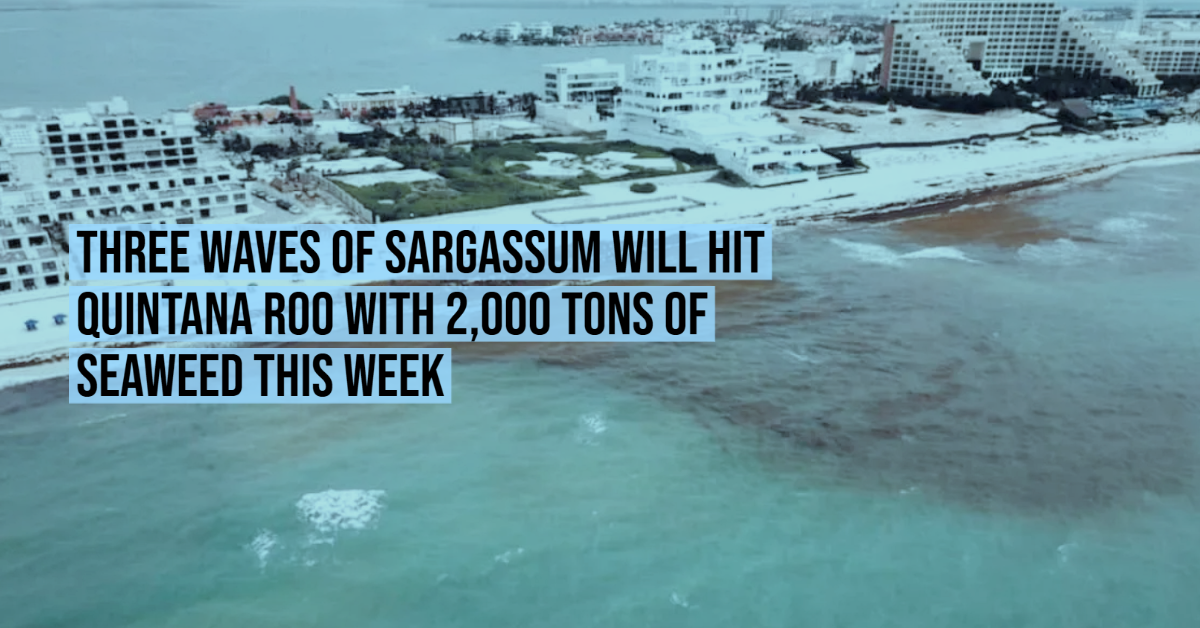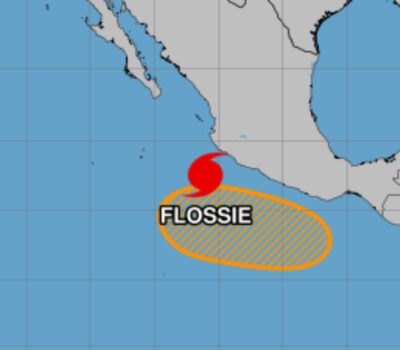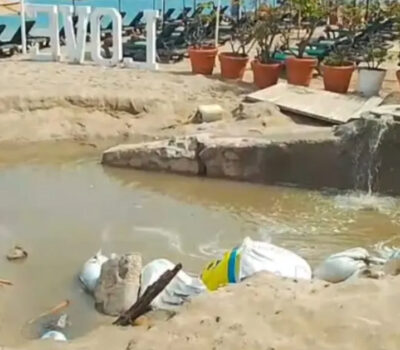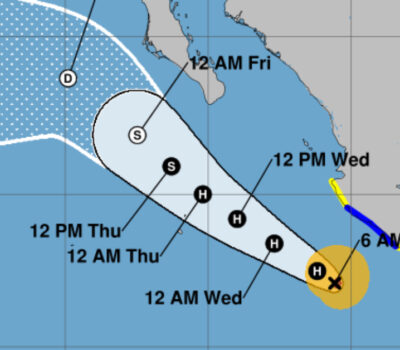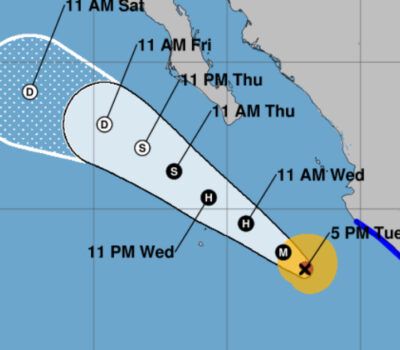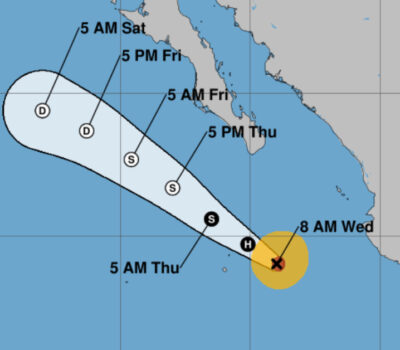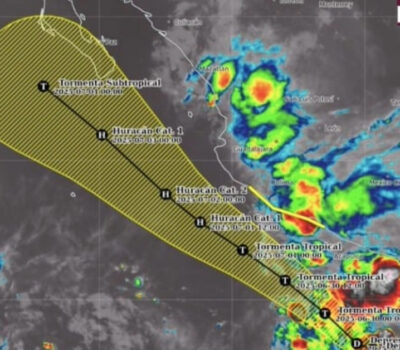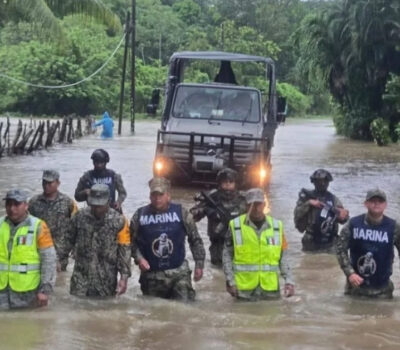The Sargasso Monitoring Network of Quintana Roo reports at least 33 points with excessive overloading of seaweed in the state, despite the deployment of equipment and personnel from the Secretariat of the Navy (Semar) since the beginning of this month in Quintana Roo.
The highest concentration is recorded on beaches in the south of the state, particularly in Xcalak, although on the beaches of Cancun, the office of the Federal Maritime Terrestrial Zone reports large patches of sargassum through photographs at the height of kilometers 14 and 15 of the hotel zone.
“Three groups of sargassum are delimited due to their maximum probability of causing landfalls on the coast of the state of Quintana Roo and Isla de Cozumel; the first, located approximately 30 kilometers south of the island of Cozumel (92 tons), will continue its entry into the Cozumel Canal in the next few hours, adding to the calls that occur to the south and east of Isla Cozumel, as well as, in the vicinity of Puerto Aventuras, Playa del Carmen and Punta Maroma in the course of the next four days,” the document reads.
The second group located approximately 18 kilometers east of Punta Herrero (887 tons) will increase during its journey along the coasts north of Sian Ka’an and around Tulum over the next three days,” he adds.
“The third group of sargassum is located approximately 30 km southeast of Mahahual, with an approximate volume of 996 tons with a high probability of generating landfalls in the municipality of Othón P. Blanco during the next 3 days,” the report states.
That is, an estimated 1,975 tons of sargassum approaching the beaches of the state of Quintana Roo, not counting the thousands of tons that have already been collected so far this season.
Semar released a bulletin in January of this year in which it anticipated a “minimum” arrival of sargassum on the state’s beaches, but as of June 13, there were already 15,597 tons of algae collected on the state’s beaches, as well as another 668 captured at sea.
Navy strategy deployed
The Secretary of the Navy announced that the strategy deployed consists of 12 sargasso vessels already in operation, as well as the placement of containment barriers parallel to the coast to capture the sargassum before it reaches the beaches.
The new Collected Sargassum Monitoring System (Simsar) was launched on May 12, which has among its objectives to systematize the information on the volumes collected on the coasts of Quintana Roo, which In theory, it will allow improvements to be made in the management and utilization strategies of the algae.
Inaccurate sargassum forecasts
On January 8 of this year, Semar issued a statement in which it anticipated “that within the framework of the Strategy of the Government of Mexico to contain the atypical phenomenon of sargassum, it is expected that during 2021 there will be little arrival of this algae in the coasts of the Mexican Caribbean and the state of Quintana Roo.
“This conclusion was reached based on a study carried out by naval personnel, using information and data from North American institutions, which considered different oceanographic variables, such as the algal density present in the Atlantic Ocean, as well as surface and meteorological oceanographic currents, such as the surface wind, the outgoing longwave, tropical cyclones and the El Niño-Southern Oscillation phenomenon, which were combined for study in a matrix of variable frequencies, considering a period of time from 2005 to 2020 and applying different methods of analysis”, reads the document of the federal agency.
Related News
The Sargasso Monitoring Network of Quintana Roo reports at least 33 points with excessive overloading of seaweed in the state, despite the deployment of . . .

